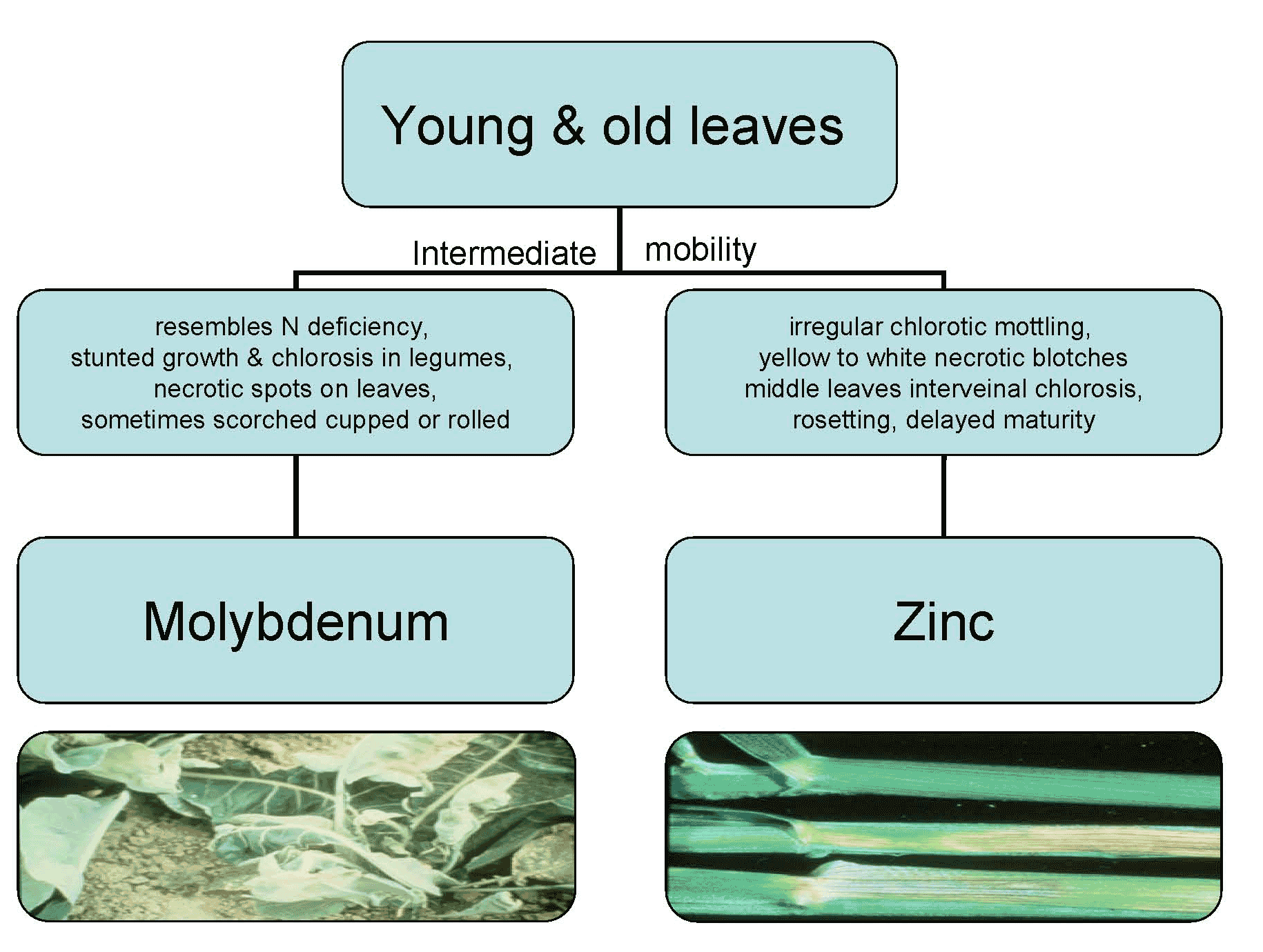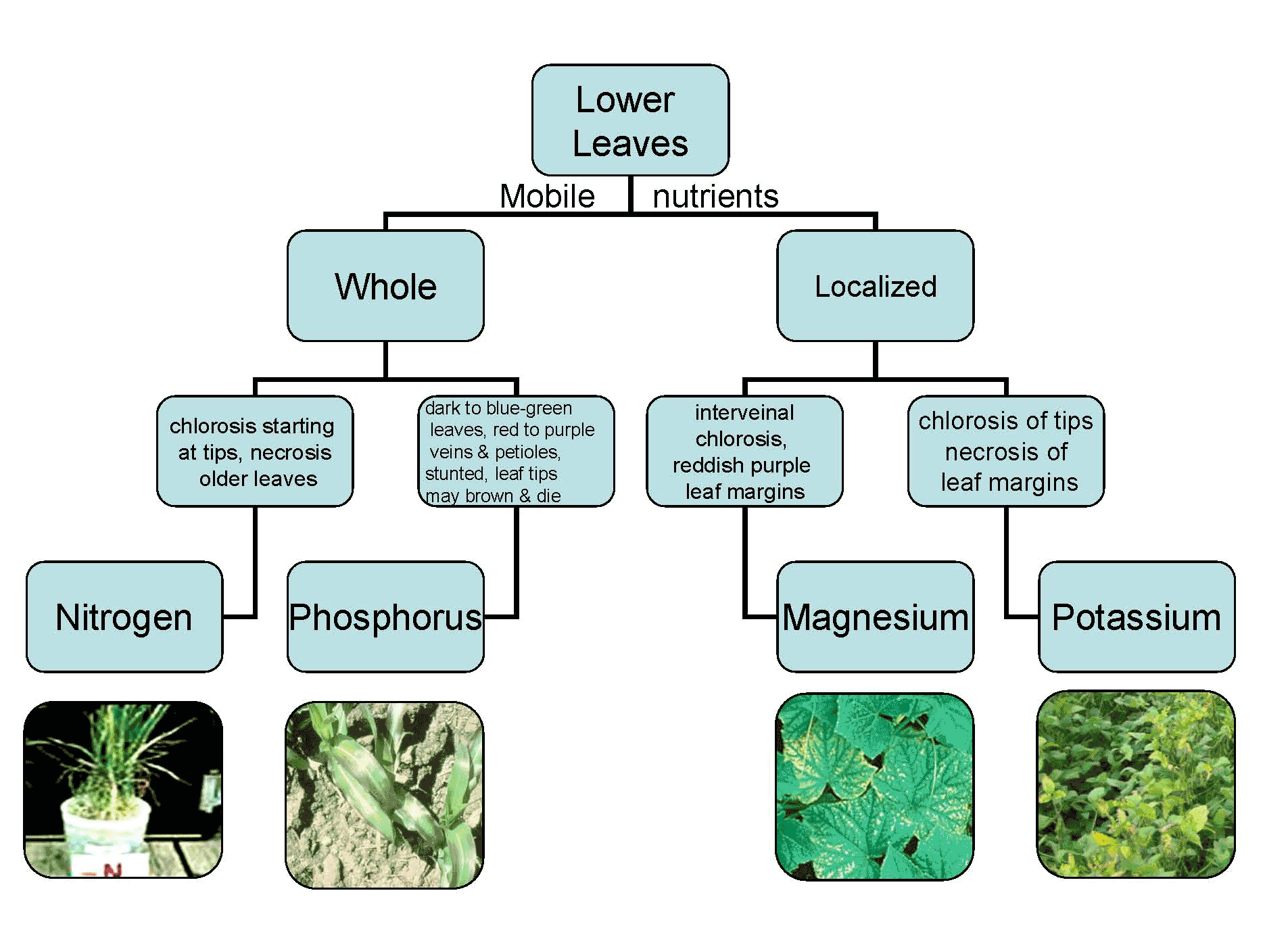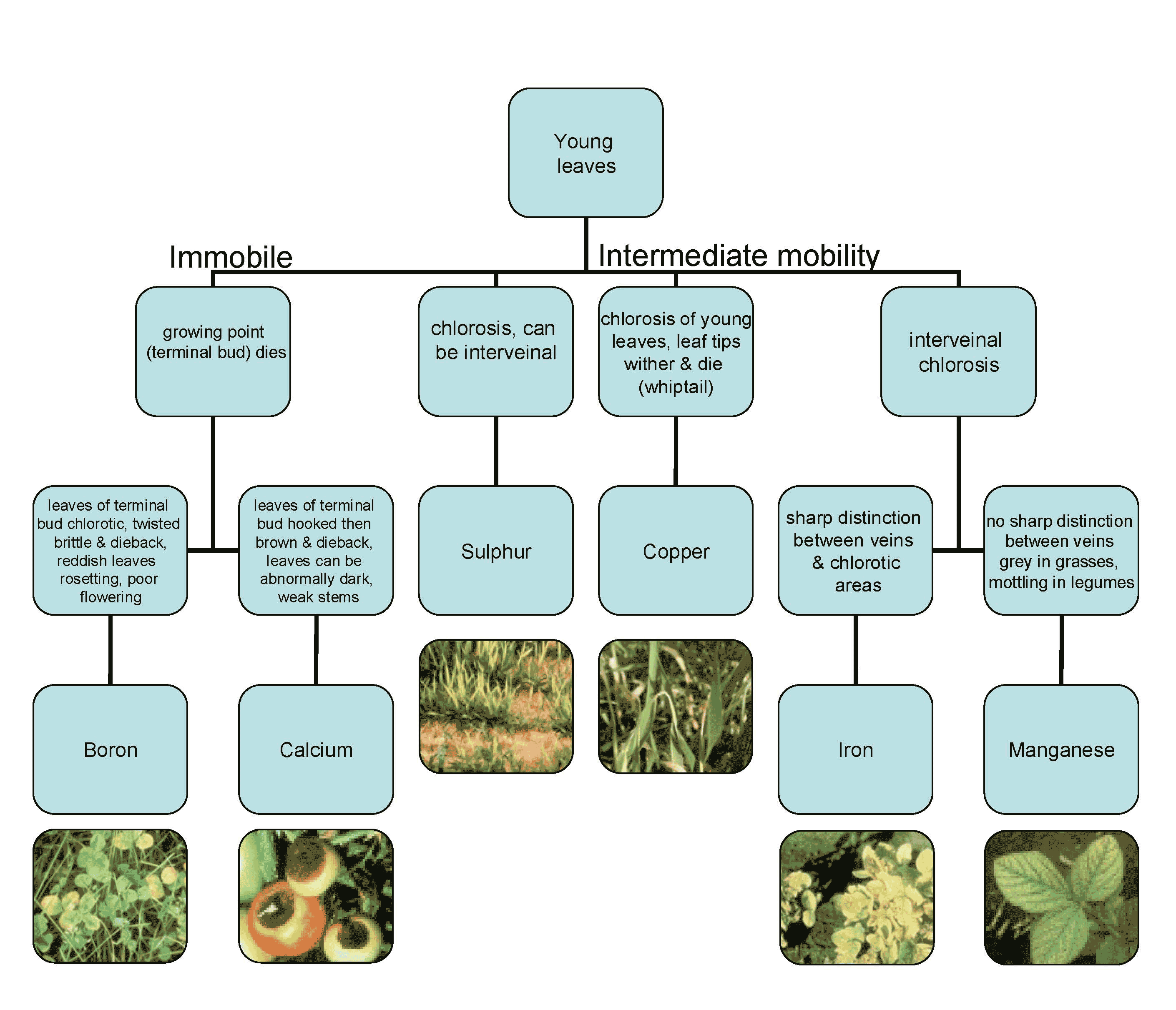Be your own crop doctor
VISUAL TESTING FOR PLANT NUTRIENT DEFICIENCIES
this year’s farMSmART Expo at the University of Guelph Elora Research Station included hands-on sessions, many of which taught farmers how to identify and, oftentimes, fix problems in their crops. Bonnie Ball, a Soil Fertility Specialist with OMAFRA, was on hand to discuss nutrient deficiency symptoms and how they affect field crops, including corn, soybeans, white beans and alfalfa. Each farmer was provided with a nutrient deficiency key, which included key terms and images of nutrient deprived plants as examples. On the table in front of them were five plant containers, each holding plants deficient in something. Using the key provided, they were asked to determine which part of the plant was affected and what the symptoms were. The answers would help determine which nutrient was deficient in each plant.
You can also try your hand at a visual nutrient deficiency test. The three charts are the exact same key farmers received at the Expo. Please note that the top bubble shows the location of the problem, which can be in the young leaves, older leaves, or both. Beneath, you’ll see the words ‘mobile,’ ‘immobile’ or ‘intermediate mobility.’ This tells you the degree of nutrient mobility within the plant.



Intermediate mobility means the nutrients move only under certain conditions, or that they move to a lesser extent than mobile nutrients. For example, says Ball, nutrients may move from old leaves to intermediate age leaves. “Mobile nutrients move out of older leaves into younger parts of the plant,” she says. “Immobile nutrients do not move from one part of the plant to another.”
identifying deficiencies
For optimal health, plants require a mix of different nutrients. Nutrients that are needed in large amounts are called macronutrients, while nutrients that are needed in small amounts are called micronutrients. Macronutrients include nitrogen, phosphorus and potassium. Secondary nutrients are calcium, sulfur and magnesium. Micronutrients include boron, copper, zinc, manganese, molybdenum, and iron.
Nutrients are transferred to the roots from the soil and are then taken into the plant through the roots, which is one of the many reasons why water is important for healthy plant development. Each plant prefers soil within a specific pH range. Some plants like more acidic soil, while others prefer alkaline soil. No matter how rich your soil is in nutrients, if its pH is off, the plant won’t be able to take in the nutrients.
“The answers aren’t always easy,” says Ball. To best determine the problem, she suggests that farmers do both a tissue and soil test, and then combine the results with their visual test. “When doing a tissue test,” she says, “be sure to take a sample from both the good and poor areas for comparison.”
To better understand Ball’s nutrient deficiency guide, you’ll need to know these key terms.
- Chlorosis is the yellowing of leaf tissue. Chlorosis can be caused by a number of things, including poor drainage, damaged roots and nutrient deficiencies. If the problem is a nutrient deficiency, it could be because there aren’t enough in the soil, or the nutrients are unavailable due to a high soil pH.
- Discolouration manifests as leaf discolouration or distortion as a result of plant nutrient deficiencies.
- Interveinal Chlorosis is the yellowing of leaves between the veins. The veins themselves remain green. Interveinal chlorosis is usually the result of a nutrient imbalance.
- Mottling is the appearance of uneven spots, usually yellowish, and is a sign of plant disease or a nutrient deficiency.
- Necrosis causes leaves, stems and other plant tissue to darken and wilt, which can make the plant more susceptible to diseases and pests. It is usually the result of a nutrient deficiency.
Now it’s your turn! Look at the picture of the plants on below. Pay close attention to the location of the problem. Now look closely at the key to determine the plant’s deficiency.
Once you’ve made your best educated guess, look below for a visual explanation of the answer:







